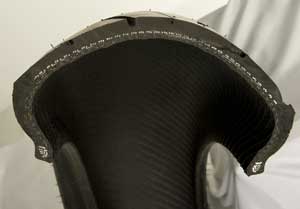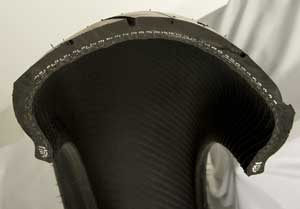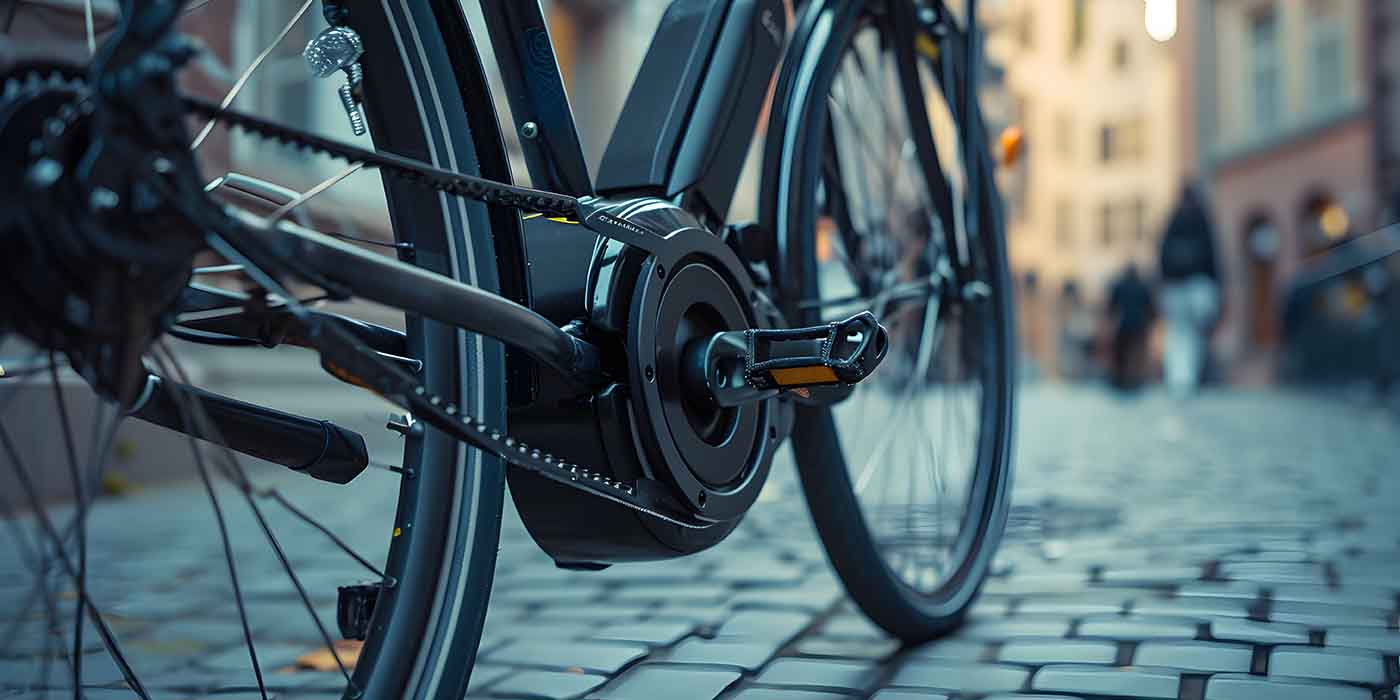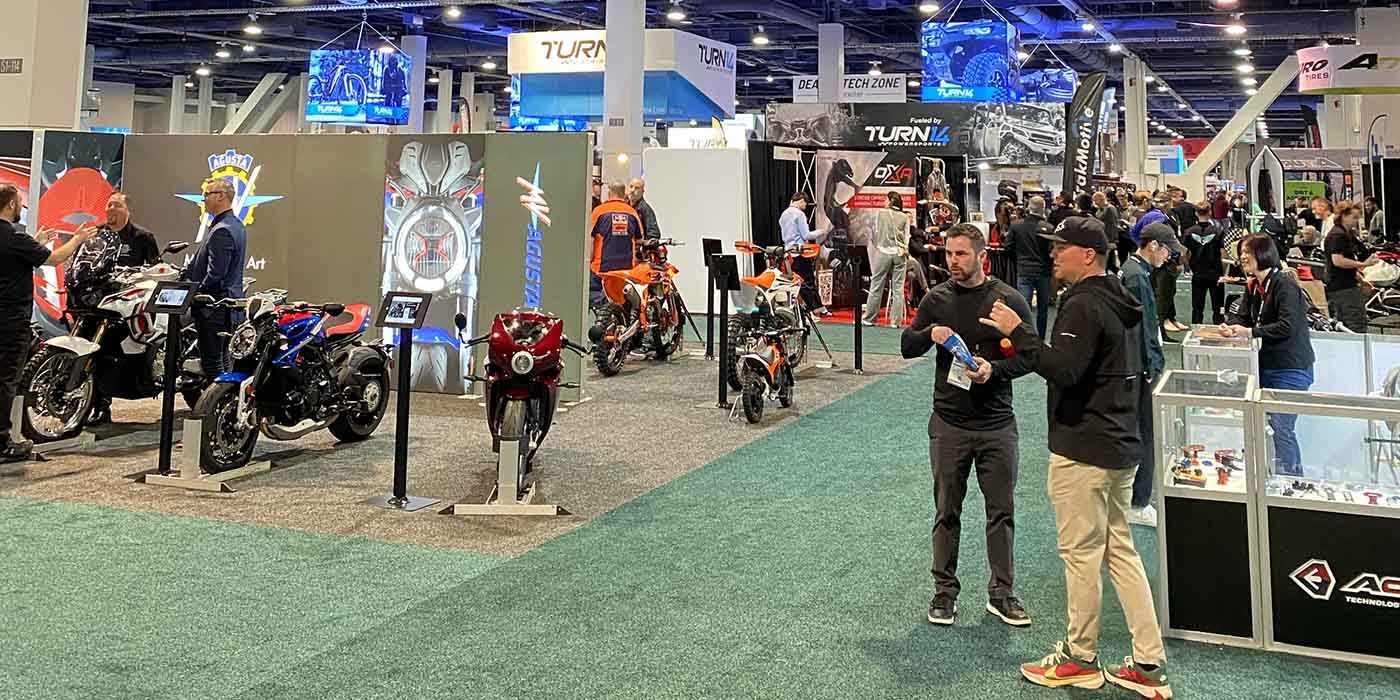Some of you probably remember this old tire ad with the tagline: “Because so much is riding on your tires.” In the context of your dealership, this adage holds particularly true. With new unit sales flat and more customers keeping old bikes in use longer, tire sales are one of the critical elements keeping your doors swinging – or they should be! According to the Motorcycle Industry Council’s (MIC) most recent Tire Sales Report, nearly 3 million motorcycle and scooter tires were sold last year alone.* Multiply that by a factor of four for the ATV and UTV segments and that is a lot of rubber rolling out!

They are all round and black so just how hard can it be to get a handle on the tire market? Seriously? Tire technology has radically changed in just the past decade and the days of us desert racers ‘curing’ our Barum tires on a hot tin roof to make them harder have gone the way of the dodo! If you don’t want tire sales to slip through your grasp, you had better become an expert!
The good news is that virtually all the players have extensive tools to get you up to speed on the tire market. All the distributors have dedicated brand managers on staff and the tire companies have tons of collateral materials. In fact, Michelin even offers a complete motorcycle tire training program for dealers online at www.michelin-training.net.
Motorcycle tire construction itself is fairly standardized, divided into three fundamental types: Bias, bias-belted and radial (there is a fourth category if you count the 0-degree technology popularized by Metzeler and now offered by Avon, Continental and Shinko among others). In addition to the carcass construction, the introduction of elements such as silica to the rubber compound will vary from manufacturer to manufacturer. Take for example the silica-charged rubber compounds found in tires like Michelin’s Pilot Road 4. These compounds are specifically formulated to disperse water and provide increased grip from 23º F (-5º C) to 113º F (45ºC). The silica helps enhance traction in virtually all conditions on a wide range of road surfaces including painted lines and crosswalks, according to the company.
*MIC reports U.S. shipments of motorcycle and scooter replacement tires on a quarterly basis. Distribution of the full report is a member benefit of the organization, which was recently expanded to allow dealers to become MIC members and access critical market information such as the Tire Sales Reports and the quarterly new unit sales data. Dealers can now join the MIC for as little as $300 per year. Details can be found at membership.mic.org.
Back to the basic bias-ply tire, also known as conventional or cross-ply tire. The structure of this tire is made of a carcass where depending on the different speed and load specifications, two or more layers are overlapped. Each layer is made of textile cords coated into rubber and the overlap angle is designed in order to give the tire the required dynamic characteristics.
A bias-belted tire consists of a conventional carcass and a belt made of two or more crossed layers. The difference between a carcass and belt is determined by different objectives, consequently different materials that are used. The belt is generally made from an aramid fiber and its function is to reduce the dynamic deformation caused by centrifugal forces (i.e., reduce tire “growth” at high speed), while the carcass has to mainly give the tire its stiffness and load carrying capacity.
The New Player In A High Stakes Game
Vee Rubber has their own rubber plantations, explains John Leale, VP of sales and marketing. “I think the thing that sets us apart from other tire companies is that we not only have great technology, but also a true understanding of rubber compounds.” Based in Thailand, Vee Rubber is a relatively new player in the high stakes U.S. powersports tire game, but they are well established in multiple markets around the globe.
CEO Vitorn Sukanjanapong launched Vee Rubber in 1977, manufacturing bicycle and motorcycle tires and tubes. Sales quickly spread throughout Asia, Western Europe, the Latin American countries, and finally the U.S. and Canada. Employing more than 4,000 people, Vee Rubber has nearly a dozen branches situated all over the world.
“Vee Rubber utilizes its resources from other industries to create tires that are both innovative and affordable,” explains Leale. “With access to our automotive R&D team, Vee Rubber seeks to bring in technology and concepts that haven’t been used by the motorcycle guys before. We are also pretty quick to bring new products to market.
“We are looking to create lifetime customers,” adds Leale. Which explains their grassroots racing support, emphasis on the youth market and other strategic initiatives in North America. Sounds like the real deal to us.
A radial tire differs from a bias-belted tire because in the carcass “radial” – the cords are wrapped radially around the tire, from one bead to the other. Radial construction means tires with lower profiles, offering advantages in terms of cornering stability, reduced weight and high-speed performance. Radials are more rigid than a bias ply tire, with the belt winding spacing making it possible to “tune” the tire – that is produce varying levels of stiffness from shoulder to crown.
Originally patented by Metzeler, a 0-degree radial utilizes a radial carcass and a single layer belt made of steel cord. If you think of the rolling direction of the tire, the belt is wound circumferentially around the carcass giving an angle of almost 0°. Claimed benefits are even greater rigidity than a standard radial. Metzeler Advanced Winding (MAW) is the next generation of the category they created, basically a patented system that optimizes the spacing between the cords and 0-degree steel belt. Spacing is wider in the crown area for more elasticity and self damping. For sections of the tire used for mid lean, there is increased stiffness to support fast cornering. On the shoulder area of the rear tire, the spacing is again wider for safe feedback and control when riding towards full lean, according to Metzeler.
Some tires bear a letter “speed rating” designation indicating the tire’s design speed capability. This speed rating system is intended to allow you to compare the speed capabilities of tires. Experts all agree that when replacing speed-rated tires, you need to stick to the guide lines. Use the rankings in the corresponding chart to compare the speed ratings of all the tires, and follow the manufacturer’s recommendations. To avoid reducing the speed capability of the motorcycle, replace a speed-rated tire only with another tire having at least the same speed rating. Remember, it’s the “top speed” of the “slowest” tire on the vehicle, which cannot be exceeded without risk of tire failure.
Speed-Rating Symbol Speed Category*
J Up to 62mph (100Km/h)
N Up to 87mph (140Km/h)
P Up to 93mph (150Km/h)
S Up to 112mph (180Km/h)
H Up to 30mph (210Km/h)
V (with service description) Up to 149mph (240Km/h)
W Up to 168mph (270Km/h)***
Z (with service description) Over 149mph (240Km/h)**
Scooter Up to 62mph (100Km/h)
Flotation Type Up to 50mph (80Km/h)
*In laboratory tests that relate directly to highway speeds. Reminder: Actual tire speed and performance capability depends on factors such as inflation pressure, load, tire condition, wear and driving conditions.
** Although no upper limit speed is specified here, the indicated tires nonetheless have limited rated speed capability.
*** Any tire with a speed capability above 149 mph (240 kph) can, at the tire manufacturer’s option, include a “Z” in the size designation (120/70ZR17). If a service description IS NOT included, the tire manufacturer must be consulted for the maximum speed capability.
If a service description is included with the size description, the speed capability is limited by the speed symbol in the service description.
The art and science of tread patterns is a subject for another time, however there is one more construction element that should be included in this conversation. What is a “stripe” and why is it found on some street tires? “A vehicle, charged with static electricity, must be able to discharge it into the ground,” explains Michelin’s online tutorial. “As the tire is the only point of contact between the vehicle and the ground, the regulations insist on a minimum level of conductivity in tires. The “stripe” on the tread is a thin fine band of rubber conductive enough to enable the vehicle to discharge its static electricity into the ground. This peculiar feature in the tread has no affect whatsoever on the performance of the tread.”
The bottom line? Become the tire expert in your market. As useful a tool as the Internet may be, it can’t bust the bead on a stubborn ATV tire, statically or dynamically balance a touring tire or mount up a set of soft compound slicks for your track day customers. Your dealership should be a tire center…
We can think of nearly 3 million reasons why!
Shinko On A Roll
Ever wonder what happened to Yokohama motorcycle tires? Established dealers may remember Yokohama was OEM-spec for a number of the Japanese motorcycles. Believe it or not, they are still around, and still offer OEM levels of performance … just under a new name: Shinko. In 1998 the Shinko Group purchased the motorcycle tire technology and molds from Yokohama Rubber Co., and began production under the Shinko Tire brand name. The Shinko Group actually began as a manufacturer of bicycle tires in Osaka, Japan, back in 1946, explains Shinko brand manager Sam Tanzer. “Ongoing testing in the USA and R&D at Shinko Tire’s factory means a continuous path of exciting tires to meet the need of today’s riders.” That path to market rolls right through Western Power Sports, Shinko’s master importer for the U.S.














